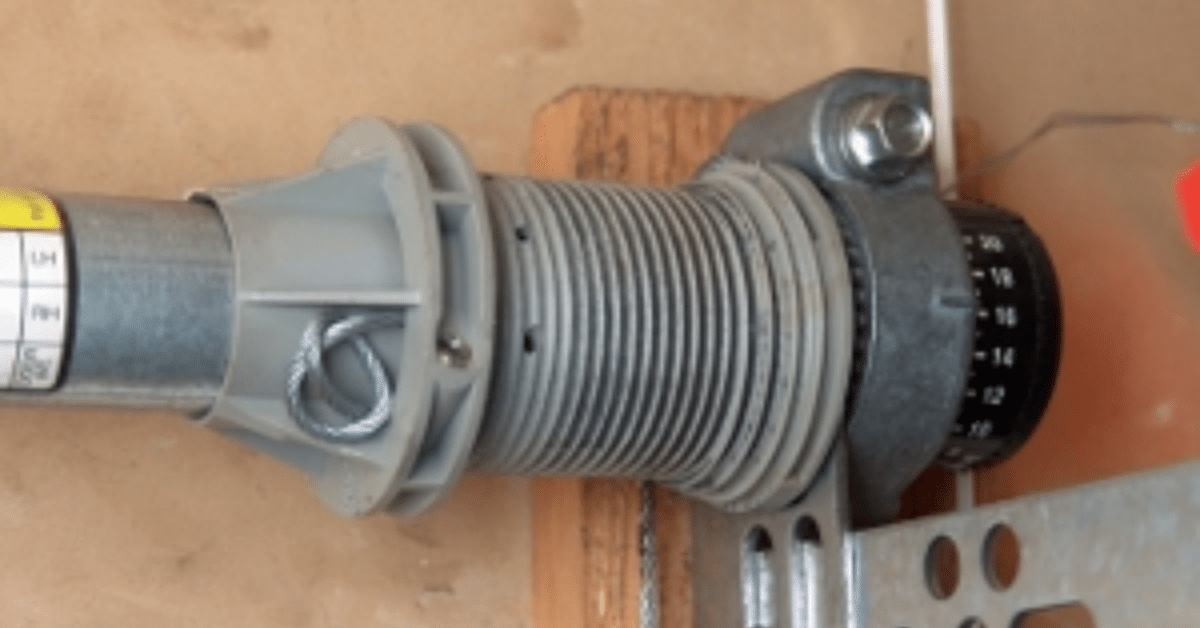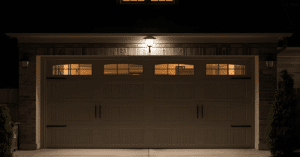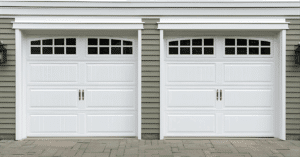If your garage door suddenly stops working correctly, one of the most common causes is a TorqueMaster spring broken inside the system. The TorqueMaster is a special type of spring mechanism designed by Wayne Dalton to provide smooth, controlled movement for your garage door. When it breaks, it can create serious safety hazards and leave you with a door that won’t open or close properly.
This guide explains exactly how to spot the warning signs, why it happens, and what to do next—so you can protect your home and avoid costly repairs.
What You Need To Know About Torquemaster Springs
Before you can tell if a TorqueMaster spring is broken, it helps to understand how the system works. Unlike standard torsion or extension springs, the TorqueMaster is a proprietary design that houses the spring inside a protective metal tube.
This enclosed setup offers a cleaner appearance and better safety because the spring is hidden from view. However, the concealed design also makes it harder for homeowners to visually inspect the spring for damage.
Because you can’t simply look at it, you need to rely on key symptoms and performance changes to detect a break.
Common Signs a TorqueMaster Spring Is Broken
Knowing the early indicators can save you time and prevent accidents. Here are the most reliable signs that point to a TorqueMaster spring broken inside your garage door system.
1. Door Feels Extremely Heavy
If your garage door suddenly feels heavier than usual when opening manually, it’s a strong sign the spring is no longer providing the necessary counterbalance. A working TorqueMaster spring offsets the door’s weight. When it breaks, the entire weight falls on you or the opener.
2. Door Won’t Stay Open
Another classic sign of a TorqueMaster spring broken is when the door refuses to stay open. Normally, the spring holds the door in place at mid-level. If the door slams shut or drifts downward quickly, the internal spring has likely lost tension.
3. Loud Bang or Snap
Many homeowners report hearing a loud pop or snapping sound at the moment the spring breaks. Because the TorqueMaster spring is inside a tube, you may not see any damage, but the sound is a key warning.
4. Motor Strains or Stops Mid-Cycle
If you use an automatic opener, you might notice the motor struggling, slowing, or stopping halfway. A TorqueMaster spring broken forces the opener to lift the full weight, which can quickly burn out the motor.
5. Uneven or Crooked Door Movement
A door that lifts unevenly, tilts to one side, or gets stuck on the tracks often points to a spring that has lost tension on one side of the system.
Visual Clues You Can Check
Even though the TorqueMaster design hides the spring, you can still perform a few safe checks:
- Cable Slack: Look at the cables running along the sides of your door. If they’re loose or hanging, it often means the spring is no longer under tension.
- Gap at the Tube End: Sometimes, a small gap or shift can appear at the end brackets of the spring tube when it breaks.
- Drum Position: On double-spring systems, the cable drums may appear uneven.
These subtle cues can confirm your suspicion of a TorqueMaster spring broken without disassembling the unit.
Causes of a Broken TorqueMaster Spring
Understanding why the spring failed can help you prevent future problems.
- Normal Wear and Tear – Springs are rated for a limited number of cycles (one cycle = one open and close). After thousands of cycles, fatigue sets in.
- Rust and Corrosion – Moisture inside the tube can lead to corrosion, weakening the steel.
- Poor Maintenance – Lack of regular lubrication and inspections speeds up wear.
- Improper Installation – Incorrect tensioning or alignment during installation can shorten the spring’s lifespan.
Safety Risks of Ignoring a Broken Spring
A TorqueMaster spring broken is not just an inconvenience—it’s a serious safety issue. Attempting to operate the door can:
- Burn out the garage door opener.
- Cause the door to slam shut unexpectedly, risking injury.
- Lead to expensive damage to tracks, cables, and rollers.
Never attempt to lift a heavy door alone, and avoid DIY spring replacement unless you are trained.
Steps to Take When You Suspect a Broken Spring
If you believe your TorqueMaster spring is broken, follow these steps immediately:
1. Stop Using the Opener
Unplug or disconnect the automatic opener to prevent further strain on the motor.
2. Secure the Door
If the door is open, carefully lower it with the help of another person. Use locking pliers or a clamp to keep it closed.
3. Call a Professional
TorqueMaster springs require special tools and expertise. Contact a certified garage door technician for a safe replacement.
4. Consider Upgrading
Many homeowners choose to convert from a TorqueMaster system to a standard torsion spring system for easier maintenance and lower long-term costs.
Maintenance Tips to Extend Spring Life
Preventive maintenance can delay the day you deal with a TorqueMaster spring broken:
- Lubricate Moving Parts every three months to reduce friction.
- Balance Check annually to ensure the door stays in place when lifted halfway.
- Professional Inspection at least once a year to detect hidden issues early.
DIY vs. Professional Repair
Because the TorqueMaster spring is under extreme tension, replacing it yourself is risky.
While some homeowners attempt DIY fixes, even experienced handymen face the danger of sudden release of stored energy.
Hiring a professional ensures:
- Correct spring selection and tensioning.
- Proper alignment for smooth operation.
- Warranty on parts and labor.
Cost of Replacing a Broken TorqueMaster Spring
The cost varies depending on door size, location, and whether you choose a direct replacement or a torsion spring conversion.
On average:
- Single Door Replacement: $150–$250
- Double Door Replacement: $200–$350
- Conversion to Torsion System: $300–$500
Investing in professional repair protects both your home and your family’s safety.
Key Takeaways
A TorqueMaster spring broken is not always visible, but the signs are clear if you know what to look for.
Heavy doors, sudden noises, and motor strain are all red flags.
Prompt action—disconnecting the opener, securing the door, and calling a technician—will prevent accidents and further damage.
Final Word
Your garage door is one of the largest moving parts in your home. Staying alert to the signs of a TorqueMaster spring broken can save you time, money, and potential injury. Regular maintenance and timely professional service are the best ways to keep your system running smoothly for years.





